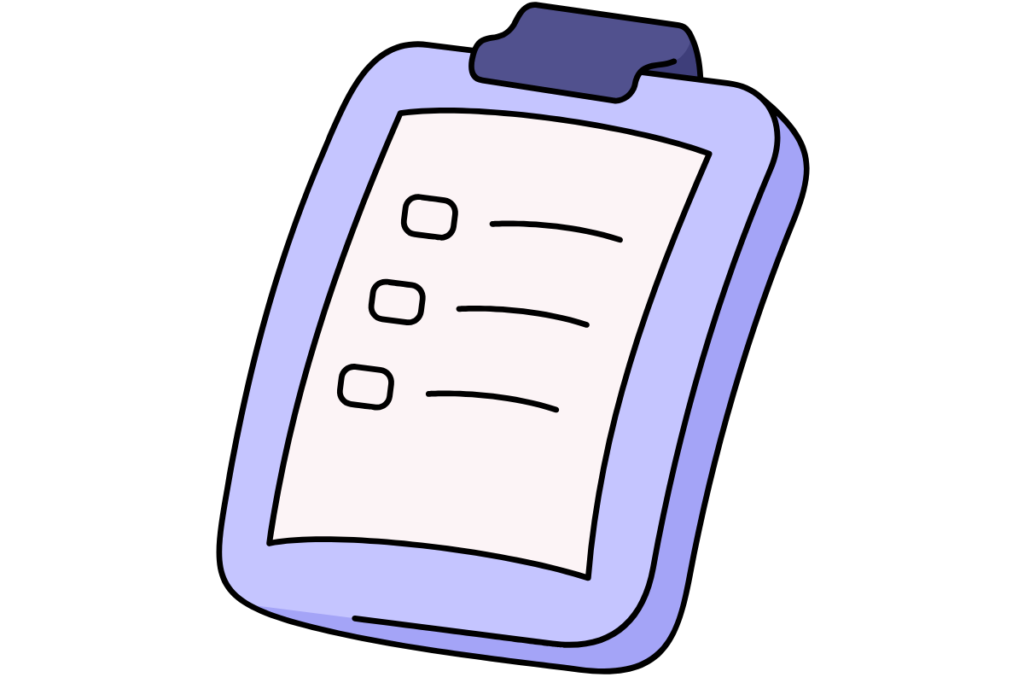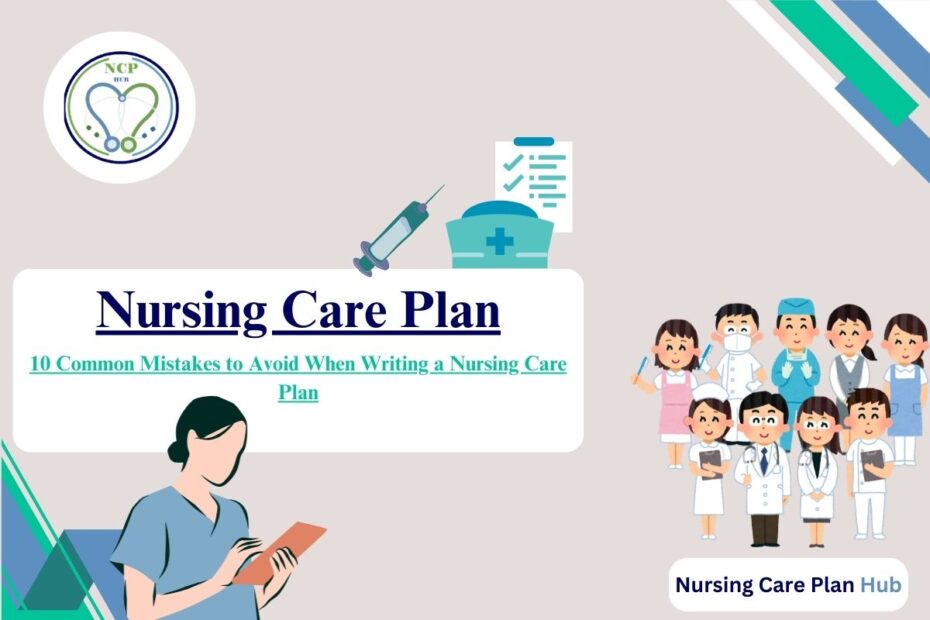A Nursing Care Plan (NCP) is a critical tool in the nursing process that enables nurses to assess, diagnose, plan, implement, and evaluate patient care. This essential document provides a structured and personalized approach to care, ensuring that the patient’s health needs are comprehensively addressed. By identifying the specific nursing interventions, goals, and outcomes, a care plan plays a pivotal role in guiding the nursing team to deliver effective, patient-centered care.
Table of Content:
- The Importance of Writing Nursing Care Plan
- 1. Failing to Thoroughly Assess the Patient Before Writing the Plan
- 2. Writing Vague or General Nursing Diagnoses
- 3. Ignoring the Patient’s Priorities
- 4. Failing to Set Clear, Measurable Goals
- 5. Writing Non-Actionable Interventions
- 6. Failing to Prioritize Interventions
- 7. Not Updating the Care Plan Regularly
- 8. Overcomplicating the Care Plan
- 9. Writing Care Plans in Isolation
- 10. Using Inconsistent or Incorrect Terminology
- Conclusion
The Importance of Writing Nursing Care Plan
The importance of writing a clear, accurate, and thorough nursing care plan cannot be overstated. A well-crafted care plan not only facilitates efficient patient care but also enhances communication among healthcare providers, which ultimately improves patient outcomes. Additionally, a strong nursing care plan helps nurses to document their thought processes, demonstrate clinical reasoning, and meet regulatory and legal requirements.
Despite its importance, many nursing students and even experienced nurses make mistakes while writing care plans. These mistakes can compromise patient safety and lead to ineffective or inadequate care. This article will explore 10 common mistakes nurses make when writing a Nursing Care Plan and provide practical solutions to avoid these errors, ensuring that care plans are effective and aligned with the patient’s needs.
1. Failing to Thoroughly Assess the Patient Before Writing the Plan
Description
One of the most crucial steps in writing an NCP is performing a thorough patient assessment. Without accurate and comprehensive data, the nurse cannot create a meaningful care plan. Many nurses, particularly in busy clinical settings, may feel rushed and skip a detailed assessment, or they might make assumptions based on limited information.
Consequences: A lack of a thorough assessment can lead to missed health issues that are critical to the patient’s care. For example, if a nurse fails to assess a patient’s wound properly, they might not identify an infection that requires immediate attention. Similarly, neglecting to evaluate psychological and social factors may overlook the patient’s emotional needs, which could hinder recovery.
How to Avoid It: To avoid this mistake, nurses must take the time to conduct a comprehensive and systematic assessment. This involves:
- Collecting objective data (vital signs, lab results, physical exams).
- Gathering subjective data (patient history, concerns, symptoms).
- Using standardized assessment tools, such as the Braden Scale for pressure ulcers or the Glasgow Coma Scale for neurological assessments.
- Involving the patient in the assessment process by asking open-ended questions to understand their health status and priorities.
A holistic approach ensures that the care plan addresses all aspects of the patient’s condition, including physical, psychological, and social factors.

2. Writing Vague or General Nursing Diagnoses
Description:
A key component of a nursing care plan is the nursing diagnosis, which identifies the patient’s health problems or potential risks. However, one of the most common mistakes nurses make is writing vague or generalized diagnoses, such as “Risk for Infection” without specifying the cause or risk factors.
Consequences: Such vague diagnoses lead to unclear interventions, making it difficult to develop specific treatment plans. For instance, if a diagnosis states “Risk for Infection” without addressing the patient’s immunocompromised status or surgical wound, the interventions might not target the patient’s unique needs, resulting in suboptimal care.
How to Avoid It: To prevent this mistake, use clear and specific nursing diagnoses based on the actual patient assessment. Follow the NANDA-I (North American Nursing Diagnosis Association International) framework to ensure accuracy. Additionally, ensure that each diagnosis reflects the patient’s condition accurately. Instead of saying “Risk for Infection,” a more specific diagnosis might be “Risk for Infection related to surgical wound and immunosuppression.” This enables the nurse to tailor interventions accordingly.
3. Ignoring the Patient’s Priorities
Description
It’s easy for nurses to become focused on their own priorities or clinical expertise when writing a care plan. However, neglecting the patient’s values, preferences, and goals can make the care plan less effective and less likely to be followed by the patient.
Consequences: If the nursing care plan does not align with what the patient considers important, they may not be motivated to follow the plan, leading to poor outcomes. For example, a patient who prioritizes mobility might be frustrated if the plan focuses too heavily on pain management without addressing their mobility goals.
How to Avoid It: To avoid this mistake, involve the patient in the planning process. Engage in open communication with the patient to understand their goals and priorities. Ask questions like, “What is most important to you right now in your recovery?” or “What are your main concerns?” This collaboration will make the care plan more personalized and ensure it addresses the patient’s specific needs.
4. Failing to Set Clear, Measurable Goals
Description
A well-written Nursing Care Plan should include goals that are SMART—Specific, Measurable, Achievable, Relevant, and Time-bound. One of the common mistakes is writing goals that are vague, unrealistic, or impossible to measure.
Consequences: Unclear goals make it difficult to assess progress or determine whether the patient is improving. For instance, a goal such as “Increase activity level” is too vague. Without clear, measurable criteria, nurses will struggle to evaluate the effectiveness of the interventions.
How to Avoid It: Ensure that goals are SMART. For example, instead of “Increase activity level,” a more specific goal would be “Patient will walk 10 meters independently within 3 days.” This goal is measurable, achievable, relevant to the patient’s condition, and time-bound, which enables the nurse to track progress effectively and make necessary adjustments.
Also Read: How to write Nursing Care Plan?
5. Writing Non-Actionable Interventions
Description
Interventions form the core of a nursing care plan. However, sometimes interventions are written in a way that is too vague or impractical, making it difficult to execute them.
Consequences: Non-actionable interventions can confuse the healthcare team and delay patient care. For example, an intervention that states “Monitor patient’s vital signs” is too general. It does not specify which vital signs need to be monitored, how often they should be assessed, or what actions should be taken if abnormalities are found.
How to Avoid It: Make interventions specific and actionable. For example, instead of saying “Monitor vital signs,” specify “Monitor patient’s temperature every 4 hours and report any fever above 38°C to the physician.” This gives clear direction to the healthcare team and ensures that the intervention is carried out correctly.
6. Failing to Prioritize Interventions
Description
All patient needs are important, but some are more urgent than others. Nurses may make the mistake of treating all interventions equally without prioritizing them based on urgency or importance.
Consequences: When interventions are not prioritized, critical issues might be overlooked, leading to worsening patient conditions or complications. For instance, a nurse may focus on addressing a minor issue like patient comfort while neglecting more urgent concerns such as managing a life-threatening infection.
How to Avoid It: Use critical thinking to prioritize interventions based on the patient’s needs and health status. Utilize frameworks like Maslow’s Hierarchy of Needs or the ABCDE (Airway, Breathing, Circulation, Disability, Exposure) approach to prioritize interventions effectively. For example, if a patient is experiencing respiratory distress, interventions related to airway management should take precedence over less urgent concerns like patient education.

7. Not Updating the Care Plan Regularly
Description
A Nursing Care Plan is a dynamic document that needs to be reviewed and updated regularly based on the patient’s progress or changes in their condition. Some nurses fail to make timely updates, which can result in outdated interventions.
Consequences: An outdated care plan can lead to ineffective interventions that no longer meet the patient’s needs. For example, if a patient’s wound is healing well and no longer requires frequent dressing changes, the care plan should be updated to reflect this change, ensuring that care remains relevant.
How to Avoid It: Set aside time to review and update care plans regularly, especially after each assessment or significant change in the patient’s condition. Include new goals and interventions based on the current health status and always check that the plan is still aligned with the patient’s evolving needs.
8. Overcomplicating the Care Plan
Description
In an attempt to be thorough, some nurses make the mistake of overcomplicating the care plan, adding excessive details or irrelevant information that distracts from the key goals.
Consequences: An overly complicated care plan can confuse both the nurse and the healthcare team. It may also lead to wasted time spent on unnecessary tasks, ultimately detracting from the delivery of essential care.
How to Avoid It: Keep care plans clear and focused on the patient’s primary needs. Limit the information to what is directly relevant to the patient’s care, and avoid extraneous details that don’t contribute to achieving the set goals. Use concise language and prioritize the most critical issues.
9. Writing Care Plans in Isolation
Description
Writing a care plan without collaborating with other healthcare team members can lead to an incomplete or fragmented approach to patient care.
Consequences: When nurses work in isolation, they may miss important input from other team members, such as physicians, physical therapists, or social workers. This can lead to fragmented care, conflicting interventions, and missed opportunities to address the patient’s needs holistically.
How to Avoid It: Collaborate with the entire multidisciplinary team to develop a comprehensive care plan. Discuss the patient’s condition in team meetings and gather input from relevant specialists. By including everyone in the planning process, the care plan will be more holistic and well-rounded.
10. Using Inconsistent or Incorrect Terminology
Description
Using inconsistent or incorrect terminology can create confusion and lead to miscommunication among the healthcare team. This is a common mistake, especially when nurses use non-standardized terms that don’t align with established guidelines.
Consequences: Incorrect terminology can result in misunderstandings or errors in patient care, putting the patient at risk. For example, using different terms for the same condition or intervention can cause confusion about the patient’s treatment.
How to Avoid It: Use standardized nursing language, such as NANDA-I for diagnoses, NIC for interventions, and NOC for outcomes. This ensures clarity and consistency across the healthcare team and reduces the risk of errors.
Conclusion
In conclusion, writing an effective Nursing Care Plan is a vital skill for all nurses. By avoiding the common mistakes outlined in this article, such as failing to assess the patient thoroughly, setting unclear goals, and not collaborating with the healthcare team, nurses can create comprehensive and effective care plans that ensure optimal patient care. The nursing care plan should be a living document, updated regularly and tailored to the patient’s changing needs, with clear, actionable steps that guide the care process.
For nurses and nursing students looking to improve their care plan writing skills, continuous learning, feedback from mentors, and a commitment to using evidence-based practices are essential. By focusing on accuracy, specificity, and patient-centered care, nurses can significantly enhance their ability to provide the best possible outcomes for their patients.
